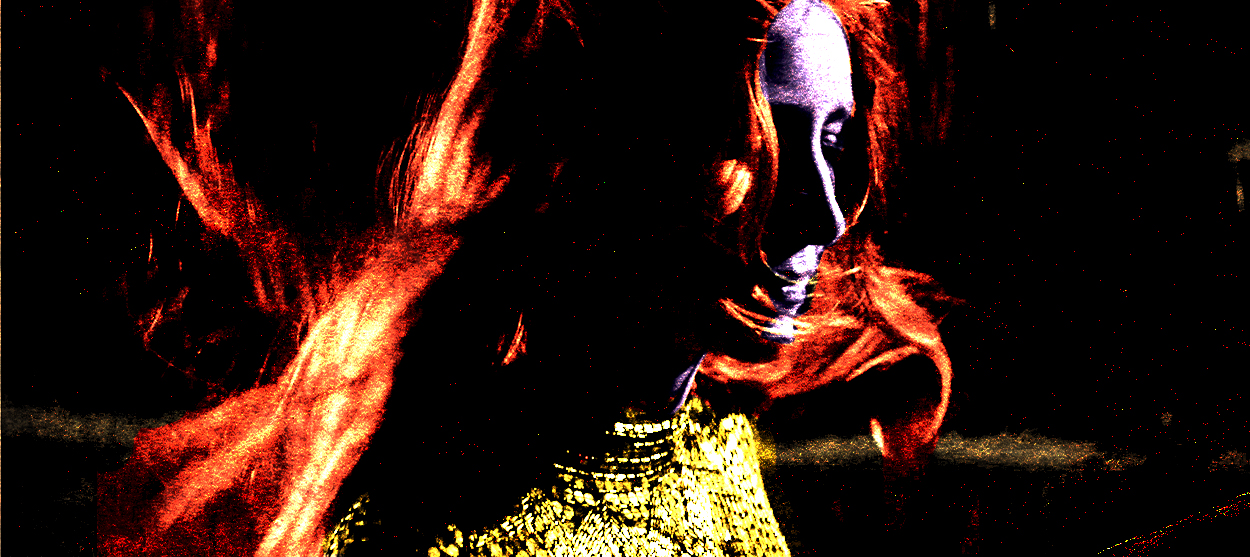The real Justice League is on The CW
How the "Arrowverse" breathed new life into the superhero ensemble


For decades, Hollywood studios stockpiled excuses for why they couldn't make live-action movies or TV shows based on Marvel and DC Comics' most popular characters. Even when millions of readers each month were following the adventures of the X-Men, the Teen Titans, and the Fantastic Four, those fans still heard that the comic book audience was too "niche," and that even the most cutting-edge special effects weren't advanced enough to make superhero action on-screen look as dynamic as it did on the page. Also, weren't all those colorful costumes ... well, silly?
Anyone who's paid attention to the box office results over the past decade knows that Hollywood's hardly scared of superheroes any more. If anything, we're overstocked on caped crime-fighters and sneering super-villains. Between Marvel's Avengers and Guardians of the Galaxy series, Fox's X-Men and Deadpool franchises, and DC/Warner Brothers' various iterations of Batman, Superman, and Wonder Woman, scarcely a season passes without some kind of comics-derived property earning upwards of 10 figures worldwide.
But the movies haven't exactly embraced superheroes, per se. DC/Warners' trouble-plagued new Justice League film is a case in point. The picture is sure to make a ton of money (if less than the studio had hoped); and yet as with every other Superman or Batman project overseen by director Zack Snyder, there's something almost apologetic about it. It takes the integral elements of superheroes — the powers, the high-tech gear, the tragic origin stories — and amplifies them to the point that they become distracting.
The Week
Escape your echo chamber. Get the facts behind the news, plus analysis from multiple perspectives.

Sign up for The Week's Free Newsletters
From our morning news briefing to a weekly Good News Newsletter, get the best of The Week delivered directly to your inbox.
From our morning news briefing to a weekly Good News Newsletter, get the best of The Week delivered directly to your inbox.
Judging by his Man of Steel and Batman v Superman: Dawn of Justice, Snyder is preoccupied with the mid-1980s period in DC history sometimes known as "the grim 'n' gritty era," when writers and artists tried to appeal to a more mature audience by making heroes like Batman more violent and brooding. All of Snyder's DC films — Justice League included — seem more concerned with the repercussions of actions than with the actions themselves. They answer the question, "What if superheroes walked among us?" with the decidedly dispiriting, "They'd probably suffer crippling PTSD."
Snyder's not solely responsible for Justice League. Due to personal tragedy, he handed reshoots (and rewrites) off to Joss Whedon, the TV-trained writer-director-producer who's moved from the cult success of Buffy the Vampire Slayer and Firefly to the billion-dollar-grossing Marvel blockbusters The Avengers and Avengers: Age of Ultron.
Whedon's known for his wry sense of humor and his admiration for heroes who sacrifice happiness and relationships to do what they think is right. It's hard to know exactly which parts of Justice League bear Whedon's signature and which are pure Snyder. But in telling the story of how Batman, Wonder Woman, Aquaman, Cyborg, and the Flash come together to fight an alien invader (and, in the process, revive the not-as-dead-as-he-seems Superman), Justice League plays up the characters' more eccentric personality traits for comic effect, while throwing in a lot of chatter about how important it is for someone with special gifts to lead an inspiring life.
But like so many superhero films in the years since the first X-Men became a surprise hit in 2000, Justice League struggles to justify the obvious expense that went into making it. While the first massively popular wave of superhero team comics in the 1960s mixed "a group of powerful friends band together to save the world" stories with smaller-scaled adventures, on the big screen everything skews huge — from the bulky costumes to the overwrought plots. Aside from refreshingly lower-key exceptions like Logan and Ant-Man (and to some extent Wonder Woman), these pictures are brassy and beefy ... bordering on a parody of what movie producers think superhero fans enjoy.
A free daily email with the biggest news stories of the day – and the best features from TheWeek.com
Looking for an alternative? This week, The CW is continuing what's become an annual tradition, telling a story that stretches across its four superhero shows: Supergirl, Arrow, The Flash, and DC's Legends of Tomorrow. Because each of these series features roughly a handful of costumed crusaders regularly patrolling the streets, skies, and timeline, any given episode of this "Crisis on Earth-X" crossover could have a dozen or more DC heroes working together. In a way, it's a more faithful Justice League adaptation than Justice League.
What's remarkable about the development of the "Arrowverse" is that it had such an unassuming beginning. When Arrow launched on The CW in the fall of 2012, it was a fairly down-to-Earth action-adventure show, about a brooding young millionaire gradually taking on the mantle of his city's protector. Nothing was overly flamboyant: not the outfit Oliver Queen wore at night as "the Arrow," not his enemies, not the kinds of weapons he used to stop criminals, and not his sidekicks.
For flashiness, turn to The Flash. Spun off from Arrow, The CW's second show quickly became an exercise in how much old-fashioned whiz-bang super-heroics TV audiences could take. Embracing the characters' kooky comic-book roots — and taking advantage of advances in budget-priced special effects — the show pitted the super-speedster against psychic gorillas and sneering crooks with freeze-rays. It surrounded him with a support team who developed powers of their own. Most importantly, The Flash was (and is) a hit.
By the time The Flash finished its first season, Arrow had moved more in its sister show's direction, with supporting players suiting up and becoming more actively involved in the missions. Before long, "the Arrow" had become "Green Arrow" (just like in the comics), and was working both with and against more super-powered characters — including the Atom, who's currently shrinking and growing every week on the shamelessly fantastical time-travel series Legends of Tomorrow. As for Supergirl, from episode one it's been unafraid to throw crazy-looking aliens and deep-cut DC characters and concepts into its mix.
The Arrowverse is hardly a seamless operation. All four of its shows have gone through stretches where the storytelling has become needlessly convoluted and dour, making the same mistake that the movies often do: mistaking "heaviness" for "sophistication." It's also been hard for fans to ignore the various behind-the-scenes problems these series have been dealing with, whether its cast members abruptly dropping out over creative differences, or — far more seriously — core writer-producer Andrew Kreisberg recently being suspended due to sexual harassment accusations.
But after two consecutive seasons of putting its title character through hell, The Flash's writers have made a clear effort to lighten up this season, returning to the light-hearted adventures — and offbeat characters, like DC fan-favorite Elongated Man — that made it so popular in the first place.
Meanwhile, very stealthily over the past two years, Legends of Tomorrow has become The CW's most reliably entertaining and thrilling superhero series, with an "anything goes" approach that compares well to past science-fiction ensemble shows like Star Trek and Firefly. It's nowhere close to being a TV classic like those two, but it passes the time agreeably.
Ultimately, that's what makes the Arrowverse a truer comic book adaptation than any of the recent DC movies. There's nothing wrong with the ambition of those pictures, per se. Christopher Nolan's Batman films are impressively expensive-looking and effectively grapple with grand themes. Even Synder's work has moments of genuine awe, where watching his good guys and bad guys clash is like seeing actual gods waging battle in the heavens.
But the classic Marvel and DC runs of the '60s, '70s, '80s, and '90s balanced the epic and the endearingly preposterous. They had room for characters like the super-stretchy Elongated Man, Arrow's genius athlete Mr. Terrific, Supergirl's shape-shifting Martian Manhunter, and Legends of Tomorrow's animal-powered Vixen. Writers and artists working on monthly deadlines would take chances, trusting in the inherent disposability of cheaply printed magazines to let them bury any mistakes in the pages to come.
The biggest difference between Justice League and the Arrowverse is the the latter's working in newsprint, while the former's trying to carve its images into stone slabs. One's recreational; the other's a chore.
Noel Murray is a freelance writer, living in Arkansas with his wife and two kids. He was one of the co-founders of the late, lamented movie/culture website The Dissolve, and his articles about film, TV, music, and comics currently appear regularly in The A.V. Club, Rolling Stone, Vulture, The Los Angeles Times, and The New York Times.
-
 Why is Trump’s alleged strike on Venezuela shrouded in so much secrecy?
Why is Trump’s alleged strike on Venezuela shrouded in so much secrecy?TODAY'S BIG QUESTION Trump’s comments have raised more questions than answers about what his administration is doing in the Southern Hemisphere
-
 Vance’s ‘next move will reveal whether the conservative movement can move past Trump’
Vance’s ‘next move will reveal whether the conservative movement can move past Trump’Instant Opinion Opinion, comment and editorials of the day
-
 Why recognizing Somaliland is so risky for Israel
Why recognizing Somaliland is so risky for IsraelTHE EXPLAINER By wading into one of North Africa’s most fraught political schisms, the Netanyahu government risks further international isolation
-
 Walter Isaacson's 'Elon Musk' can 'scarcely contain its subject'
Walter Isaacson's 'Elon Musk' can 'scarcely contain its subject'The latest biography on the elusive tech mogul is causing a stir among critics
-
 Welcome to the new TheWeek.com!
Welcome to the new TheWeek.com!The Explainer Please allow us to reintroduce ourselves
-
 The Oscars finale was a heartless disaster
The Oscars finale was a heartless disasterThe Explainer A calculated attempt at emotional manipulation goes very wrong
-
 Most awkward awards show ever?
Most awkward awards show ever?The Explainer The best, worst, and most shocking moments from a chaotic Golden Globes
-
 The possible silver lining to the Warner Bros. deal
The possible silver lining to the Warner Bros. dealThe Explainer Could what's terrible for theaters be good for creators?
-
 Jeffrey Wright is the new 'narrator voice'
Jeffrey Wright is the new 'narrator voice'The Explainer Move over, Sam Elliott and Morgan Freeman
-
 This week's literary events are the biggest award shows of 2020
This week's literary events are the biggest award shows of 2020feature So long, Oscar. Hello, Booker.
-
 What She Dies Tomorrow can teach us about our unshakable obsession with mortality
What She Dies Tomorrow can teach us about our unshakable obsession with mortalityThe Explainer This film isn't about the pandemic. But it can help viewers confront their fears about death.
